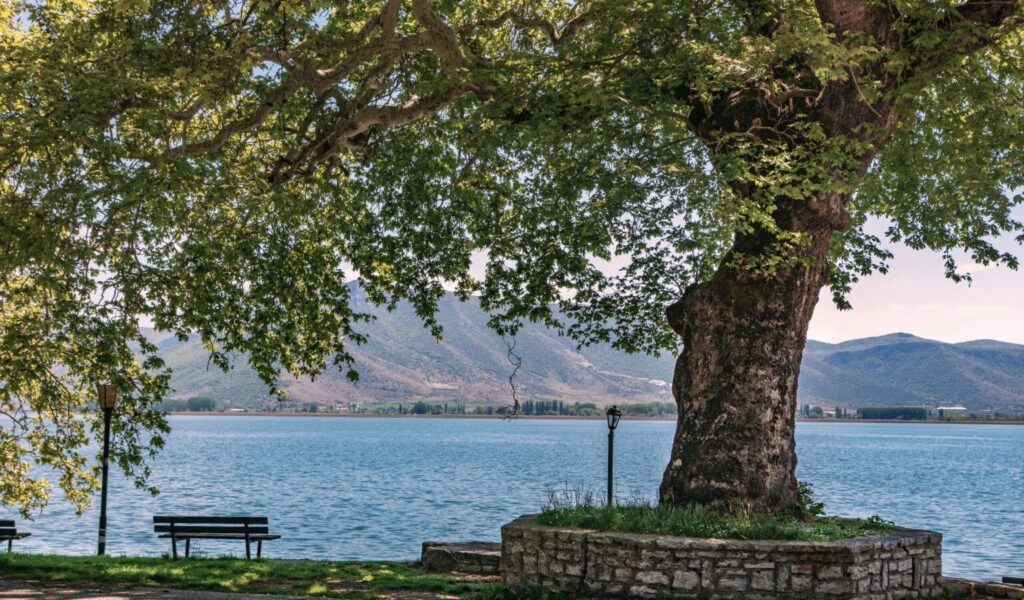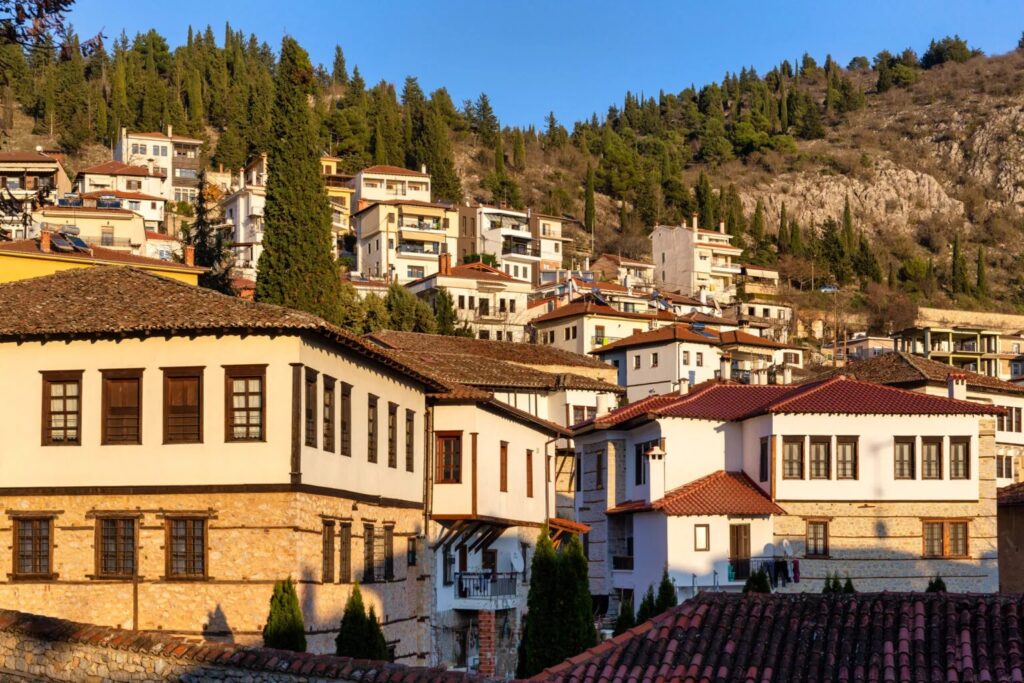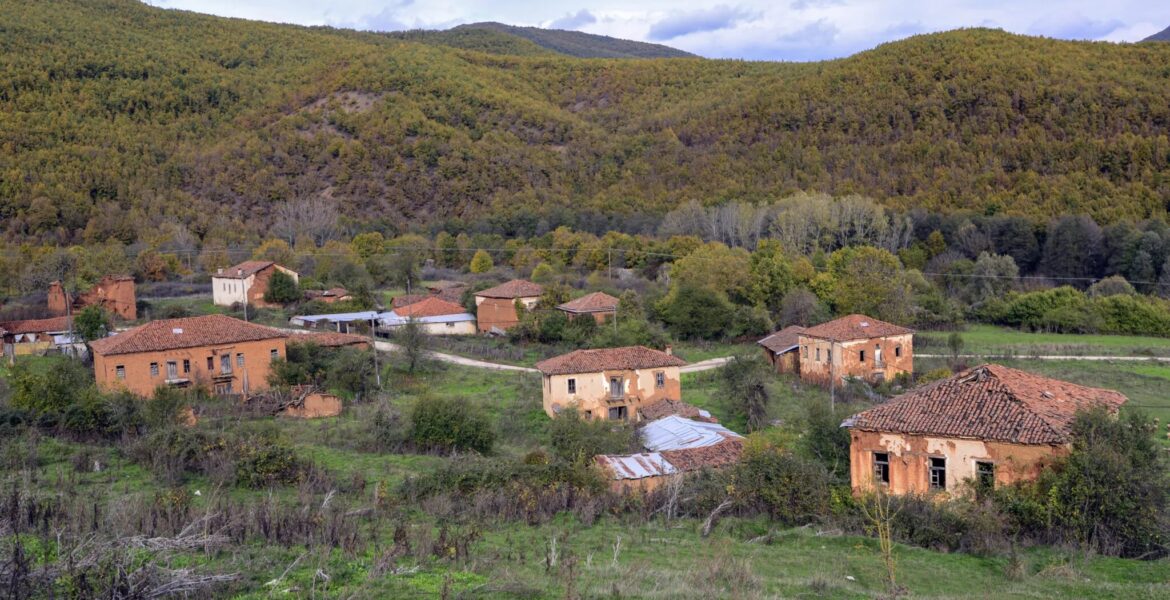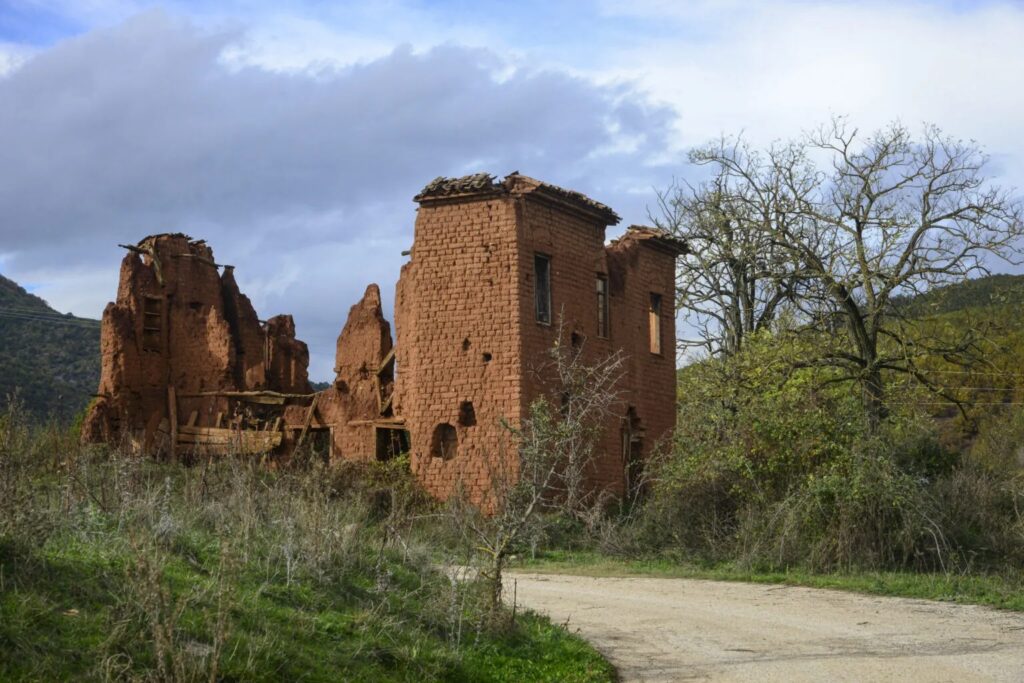Kastoria is an ideal destination for a spring escape, with its cultural wealth as a compass.
When, in the enchanting natural setting of Lake Orestiada, the emperor Justinian founded the city of Kastoria in the middle of the 6th century AD on the ruins of ancient Keletron, his imagination was unable to capture not only the city's evolution but also its significance to the Christian world and the history of Greece and beyond.
The city maintained its geographical position in a constantly changing political and military environment and its dynamic relationship with the Byzantine Empire's most important centres (Constantinople, Thessaloniki, Ioannina) and the Balkans.
This development is also reflected in the city's interaction with Orthodoxy, which makes it an ideal destination to visit during Holy Week.
At the same time, the unique natural beauties of the area and the special images produced by the sight of a small peninsula among trees, birds, water, and enviable mansions turn Kastoria into a top destination for every season of the year, especially Easter.
Here is what you must do during Holy Week visiting the Macedonian city.
The lake

Kastoria's trademark is undeniably its famous lake, which impresses visitors. The lake is a real jewel. It is 28 square metres, its depth reaches 10 metres, and its coastline reaches 30 km.
The view of the lake is fantastic, especially from the hill of Ai Thanasis. The mountains surrounding it—Vitsi and Grammos—are reflected in its clear waters.

Designated as a "Monument of Natural Beauty," the lake is an important wetland—included in the European protection network "Natura 2000"—since hundreds of bird species, such as silver pelicans, grey geese, larks, swans, herons, cormorants, etc., find refuge in its waters.
It is also considered the second richest lake in the country's fish catches (grinds, pike, perches, etc.).
You can enjoy the lake on foot or by bike, following the lakeside road around the peninsula's perimeter—which the locals call "gyrolimnia." On your way, you will see traditional boats tied up and fishermen casting their nets out into the open while birds constantly fly around you.
Calderimia and Apozari
Kastoria means, among other things, emblematic mansions and architectural play with the microcosm of stone, as the aristocratic neighbourhood of Kastoria, Apozari, attests.
Visitors can taste the Balkan colour through the stone structures and the wooden floors that dominate, as in the characteristic case of the Tsiatsiapas mansion, the largest surviving building built in the 18th century.
On the southern side of the city, again, in the famous Doltso, the mansion neighbourhood that dominates the south side of the city, the visitor has the feeling of travelling back in time, walking on the cobbled streets between the old Macedonian mansions - with their wooden loggias and colourful stained glass windows.

Many old mansions have been restored and function as museums, such as the "Afon Emmanuel" (Costume Museum), the "Nerantzis-Aivazisi" (Folklore Museum) and the house of the Macedonian fighter Anastasios Pichion (Museum of the Macedonian Struggle).
At the same time, visitors can tour the city's picturesque cobbled streets, the Cave of the Dragon, the Neolithic Lake Settlement, and the Aquarium, and they can also tour the city's peninsula with a tourist boat.
An aura of religious subjugation

Based on the above, Kastoria, with its Byzantine and post-Byzantine churches, Macedonian mansions with cobblestones, and beautiful lake with centuries-old plane trees, is also an ideal destination for Easter.
Here, you will find churches distinguished for their beauty and an environment that welcomes the day's spirit. In total, there are more than 70 churches in the city, which makes many interesting routes around this - if nothing else - an impressive fact.
The 10th-century church of Agioi Anargyri is known for its iconography and marble iconostasis, while the church of Agios Stefanos is in the same neighbourhood.
In the heart of the Stavros peninsula, the three-aisled church of Panagia Koumbelidikis (1020) is one of the most important Christian monuments in the Macedonian area, while the Byzantine Museum of Kastoria also transports the visitor back in time.
During Holy Week, actions and the revival of local customs occur, such as a musical concert with hymns and chants by Byzantine music choirs, children's workshops, and themed tours.
Four Byzantine churches from the 9th to the 12th century will be open to the public, where an image of great cultural value will be received and remain in a church for worship.
A highlight is the meeting of the epitaphios of the Metropolis and Agios Georgios in Omonia Square, with a crowd following their procession.
A special local custom is the "Rodani," set up from Holy Thursday in Apozari Square. It is an eight-seater wooden swing of folk construction and art that resembles a mill supported on stakes and turns like a wheel, entertaining young and old alike.
As for the Resurrection is worth experiencing it around the lake, where the fireworks explode in the sky, and their reflection creates a beautiful image to welcome Easter Sunday.
The Korestias and the flavours

Visitors to Kastoria can also visit the abandoned "red villages" of Korestia. Gavros, Mavrokambos, Chalara, Kraniona, and others in the quiet valley of Ladopotamos make up a "cinematic scenery."
In the villages, you will find houses made of bricks, red soil, and thatch, as well as mansions with elegant decoration, surrounded by beech forests. These are on a very interesting route of peace, contemplation, and contact with nature.

When it comes to local gastronomy, Kastoria has many interesting things to boast to visitors.
Stand out are the sarmades ("armia" as the locals call it) with pickled cabbage, the meatballs with makalo (flour, tomato and garlic sauce), and of course, grivadi fish.
In addition to the world of food, hotels and guesthouses offer high-quality accommodation, while in the shops, one can find traditional Kastoria products.
This article first appeared in Travel. Translated by Paul Antonopoulos.
READ MORE: Kalamata: Exploring the vibrant Peloponnesian city.



